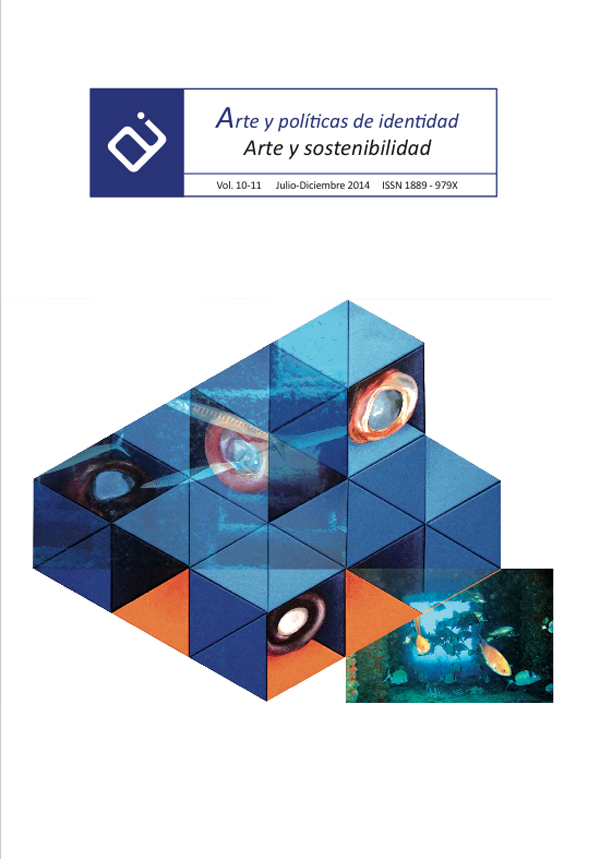Art, microorganisms and science
Abstract
Biological and artistic processes have developed a relationship of mutual inspiration, science completely distant has weakened their borders; extending the ways in which art can be created, integrating chemistry, genetics and biotechnology. The new art trends in his eagerness to create have been increasingly involved in exploring the unknown and through this knowledge to choose the best way to embody their ideas. Bioart is the result of this search and representation that art shares the same spirit with science. Microorganisms represent one of the smallest forms of life, and despite being specifically developed for biological purposes can generate objects and works of art. The present investigation was aimed at the development of artistic representations from raw material obtained from a symbiosis of bacteria and yeasts, which is able to synthesize cellulose.Downloads
-
Abstract1360
-
PDF (Español (España))1209
References
Barros, J. (2011). Bioarte: cuando el arte trasgrede las fronteras biológicas. Recuperado el 08 de Julio de 2012; http://pijamasurf.com/2011/11/bioarte-cuando-el-arte-transgrede-las-fronteras-biologicas/
Brugger, W. (2005). Diccionario de Filosofía. Barcelona: Editorial Herder. Butler, J. (2004). Mutaciones Corporales Revista de Filosofía (33). Zaragoza.
Casanovas, L. (2003). Memoria Corporal: Bases teóricas de la diafreoterapia, 2da edición.
Castaño, R. (2008). Cuerpo, Trabajo y Organización. Universidad de Antioquia. Medellín.
Duque, P. (2004). Presencias del Entorno Urbano. Facultad de Ciencias Políticas y RR. II. Argentina: UNR editora. Recuperado el 14 de Julio de 2012.
Espíndola, C. (2005). Práctica de Biología de organismos multicelulares,Buenos Aires: Universidad Javeriana.
Fargas, J. (2011). Ideas y Obras. Bioarte. Autobiografía. Argentina. Recuperado el 11 de Julio de 2012. https://www.youtube.com/watch?v=Ly1iZgqaXMY
Freud, S. (2009). 7 ensayos, editorial Distal (3).
Garcés, A. (2006). Configuraciones espaciales de lo inmigrante: Usos y apropiaciones de la ciudad, Papeles del CEIC (2). España: Universidad del país Vasco.
Gessert, G. (s. f.). To Heaven but Not with Them. Art and biology. Recuperado el 11 de Julio de 2012; http://newmediafix.net/aminima/Gessert.pdf
Jesús, E. (2005). La experiencia temporal y estética en la obra transgénica de Eduardo Kac. Estética, Ciencia y Tecnología: Creaciones electrónicas y numéricas. Bogotá: Editorial Pontifica Universidad Javeriana.
Jones, A. (2006). El cuerpo del artista. Londres: Phaidon Press Limited.
Kac, E. (2010). Telepresencia y bioarte: interconexión en red de humanos, robots y conejos. CENDEAC.
Hernández, I. (Ed.). (2005). Estética, ciencia y tecnología: Creaciones electrónicas y numéricas. Bogotá, Colombia: Pontificia Universidad Javeriana.
Lacan, J. (2008). Otros escritos. Siglo XXI. México.
Mitchell, R. (2010). Bioart and the vitality of the media.Washington: University of Washington Press.
Palma, A. (2003, Junio- Agosto). La ciencia artística o la conejita de Eduardo Kac. Elementos, ciencia, y Cultura, 10 (50), 37-41. Recuperado el 10 de Julio de 2012; http://www.ekac.org/castro.html
Serres, M. (2003). Los cinco sentidos: ciencia, poesía y filosofía del cuerpo. Madrid: Editorial Taurus.
Works published in this journal are subject to the following terms:
- The Service of Publications from the University of Murcia (publishing house) keeps the published works’ copyrights, and favors and allows the reuse of these works under the license indicated in point 2.
- Works are published in the journal’s online edition under the license Creative Commons Reconocimiento-NoComercial-SinObraDerivada 3.0 España(texto legal). They can be copied, used, disseminated, transmitted and publicly exhibited, as long as: i) the author and original source of publication are cited (journal, publishing house and work’s URL); ii) they are not used for commercial purposes; iii) the existence and specifications of this license are mentioned.
3. Conditions for auto-file. It is allowed and encouraged that authors share electronically their pre-print version (the pre-reviewed version) and /or post-print version (the reviewed and accepted version) of their Works before the publication, since it promotes its circulation and dissemination. RoMEO color: green.










